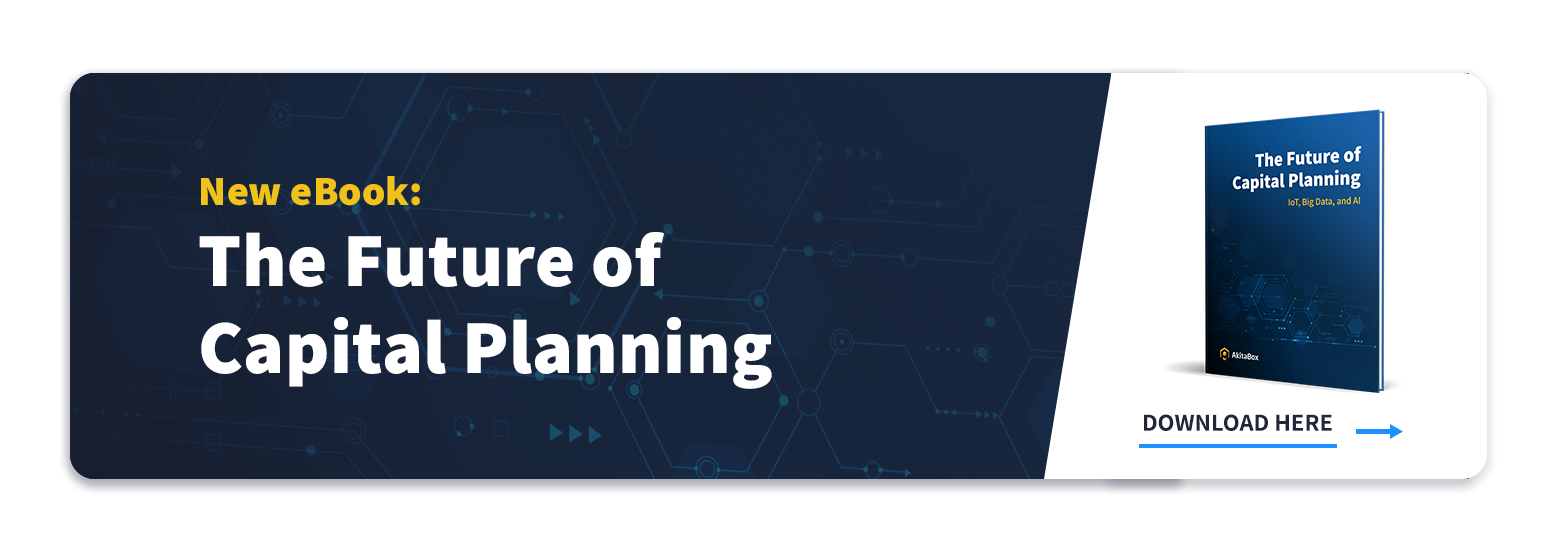Improve Facility Capital Planning with Smart Facility Management Software
Facility capital planning has traditionally been carried out in a veritable vacuum of information about the state of facility assets. Although there are generic depreciation statistics and manufacturing specs that can be referenced, they provide no information on the current state of your facilities.
Accurate facility capital planning requires planners and directors to have detailed and update-to-date reports of facility conditions and maintenance records. Unfortunately, the information needed to generate these reports is usually scattered across the organization in difficult-to-use formats or is simply unavailable. This lack of accurate data makes it nearly impossible to allocate the correct amount of capital reserve—but with smart facility management, it doesn’t have to be this way.
Want all the details on how to significantly improve your facility capital planning?
Download our 14-page eBook for everything you need to know.
Challenges to Facility Capital Planning
To put it bluntly, your data is bad. Bad data leads to inaccurate decision-making, which results in a facility capital planning mess. It’s no one person’s fault. It’s just been this way for so long, you don’t even notice the inefficiencies that are creeping in and skewing your decisions.
The biggest issue in traditional facility capital planning is the lack of accurate data specific to your assets and your facilities.
At the heart of the facility capital planning challenge is an incredible lack of the accurate data needed to properly assess facility needs. It’s an ongoing problem that feeds misinformation from facility directors all the way up to key decision-makers.
- It starts with bad data. Using traditional methods, it is absurdly difficult to gather all the data needed to create an accurate and complete picture of a facility. Facility directors have to sort through disparate FCAs, work orders, and reports to come up with numbers that are made of technician inputs and their best guess.
- Then you add generic statistics. These initial best-guess numbers are combined with generic depreciation and maintenance statistics. While this sounds like the obvious next step, the end numbers are not specific to conditions (like heat, humidity, etc.) or the maintenance histories of your assets.
- And mix in some basic Excel math. All of those wishy-washy numbers are put into a final facility capital planning budget in Excel. Many teams bake in a margin of error to protect against unexpected issues—but most decision-makers know this, so they cut down the budget based on basic line items. The actual state of the facility isn’t considered; therefore, urgent requests are often overlooked.
The result: A facility capital planning budget based on a series of estimates and guesswork.
How to Improve Facility Capital Planning
Improving facility capital planning requires a complete overhaul of traditional planning methods.
It’s All About Smart Facility Management
The future of facility capital planning will be driven by smart facility management. These solutions combine available technologies to gather and analyze data to support long-term planning and preventive maintenance:
- IoT-powered data gathering: The internet of things (IoT) will power an autonomous data-gathering machine that will continuously collect data in near real-time and feed it into a larger data pool.
- Big data pools: That IoT-generated data removes the silos that facility managers and directors were always fighting against. No more searching for asset and facility data across disparate sources—all the data you need is at your fingertips.
- AI-driven decision-making: Smart facility management will combine that massive data pool of your specific data with global data models and scenarios. The result is a variety of real-time reports that give a big-picture view of your assets and facilities. This data creates rich actionable insights in the form of suggested task lists, maintenance priorities, and investment costs.
The solution: IoT, big data, and AI come together to provide stakeholders with the accurate real-time data needed to make critical budget allocation decisions.
Get Started with Smart Facility Management

AkitaBox Capital Management software provides the complete picture of assets and facilities to answer the questions you and other stakeholders care about most:
- Cost breakdowns
- Risk evaluations
- Maintenance priorities
Implementing a smart facility management solution provides your workers, directors, and budgetary decision makers with the metrics they need to make educated facility capital planning decisions today and for decades to come. Looking to the future, AkitaBox provides the foundation to combine the power of IoT, big data, and AI to support completely automated predictive maintenance.

